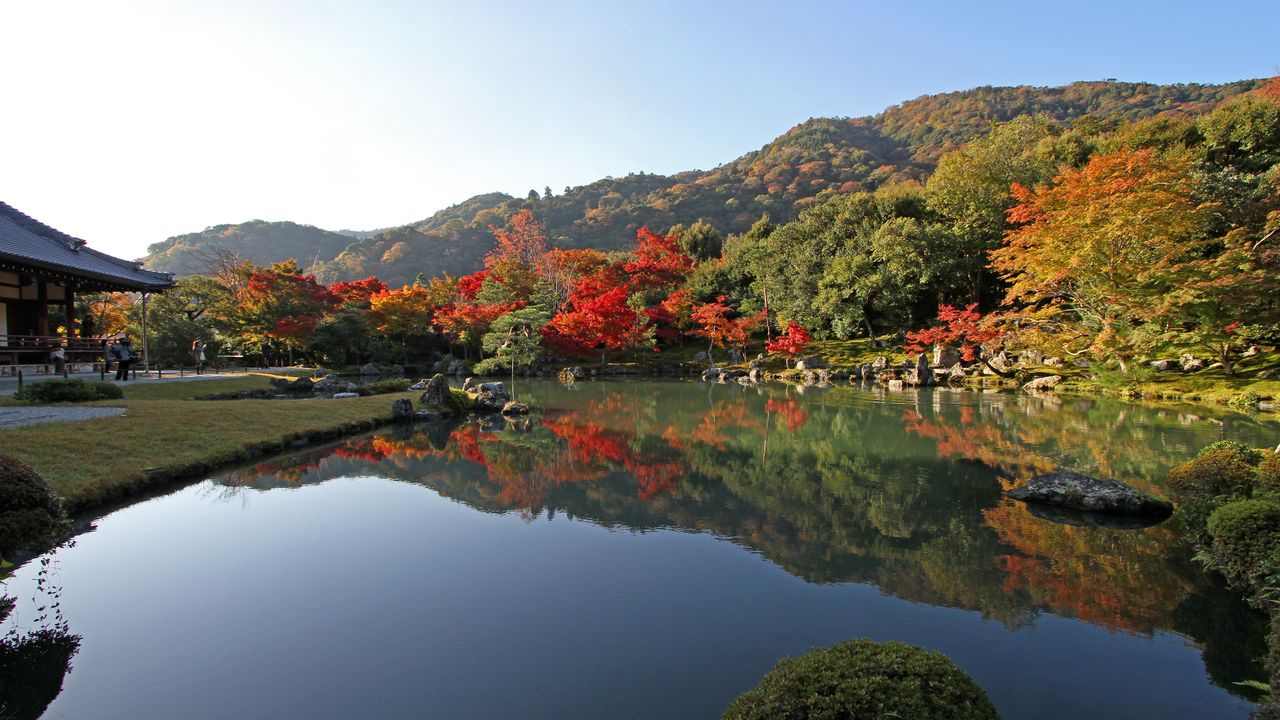
A Visit to Kyoto’s Tenryūji and Its Exquisite Garden
Guideto Japan
Travel Culture History- English
- 日本語
- 简体字
- 繁體字
- Français
- Español
- العربية
- Русский
Prominent Zen Temple
The Saga/Arashiyama area in the western reaches of central Kyoto is one of Japan’s most scenic areas. In spring, 1,500 cherries bloom on 382-meter tall Arashiyama, and vibrant red and yellow foliage brightens the spot in autumn. The elegant wooden bridge Togetsukyō spanning the Katsura River adds another scenic touch.
Numerous temples, shrines, and cultural facilities cluster in Arashiyama. The most popular of these is Tenryūji, head temple of the Tenryūji branch of the Rinzai school of Buddhism, north of Togetsukyō in the Saga district. The temple’s grounds today cover 100,000 square meters, but that is a mere tenth of its previous land holdings, which were taken over by the Meiji government in the latter half of the nineteenth century.
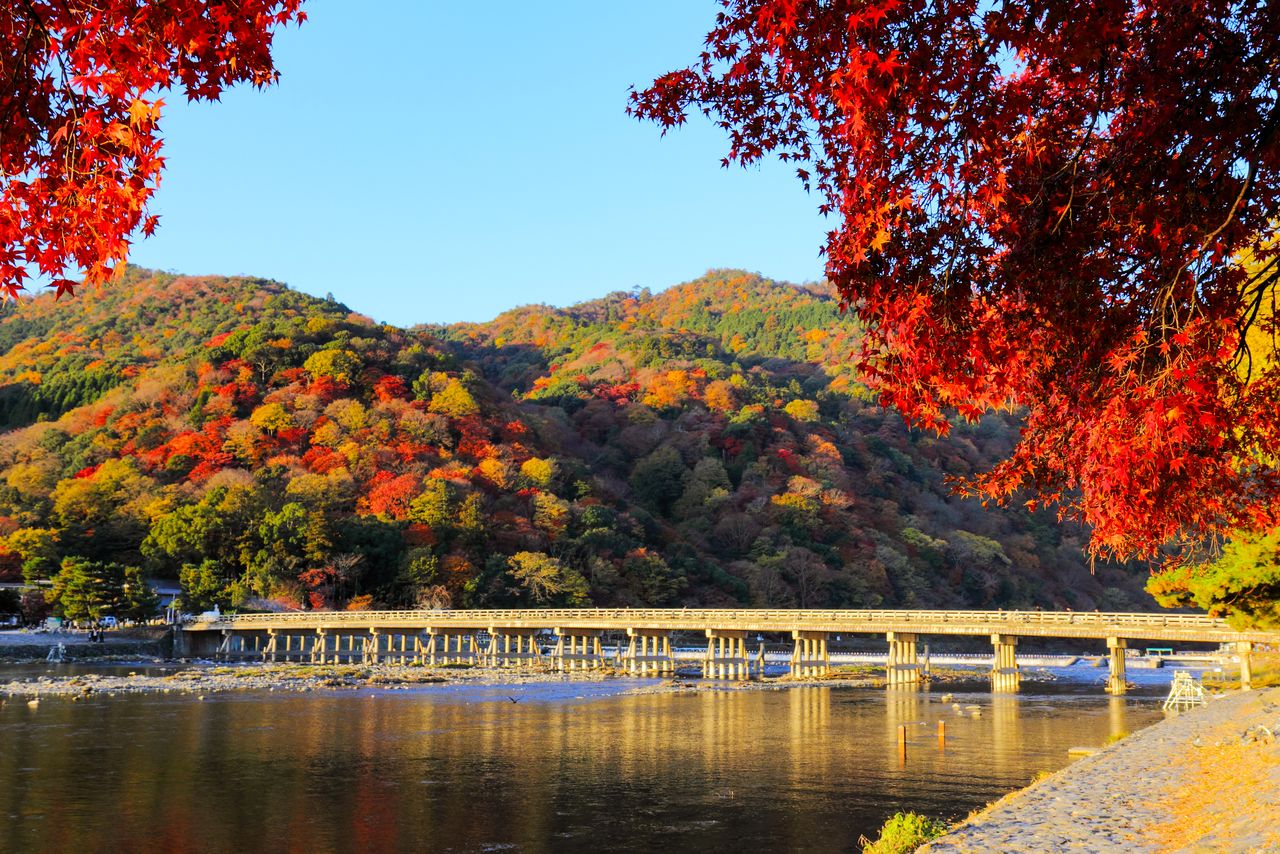
The celebrated bridge Togetsukyō was also once part of the temple’s landholdings. (© Pixta)
Tenryūji was founded in 1339 by Ashikaga Takauji (1305–58), first shogun of the Muromachi period (1333–1568), in memory of Emperor Go-Daigo (r. 1318–39). Featuring a complex of impressive galleries, the temple flourished under the shogunate’s protection and is known as one of Kyoto’s gozan, the city’s five major Zen temples.
Founding abbot Musō Soseki (1275–1351) was a highly respected religious figure granted the honorific title of kokushi seven times by the imperial court. He was also a gifted landscape architect, whose crowning achievement is the temple’s signature Sōgenchi garden.
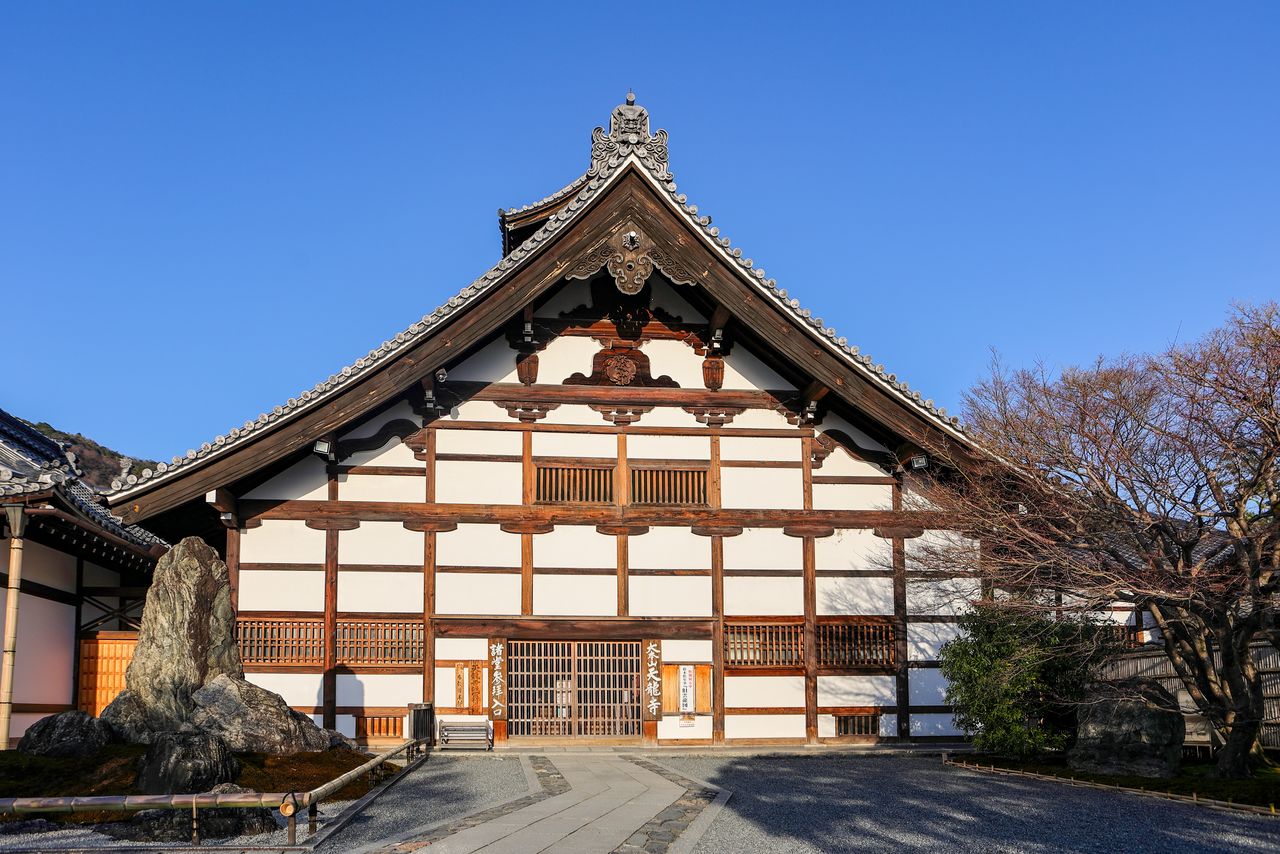
The Hattō lecture hall, which houses wooden statues of Ashikaga Takauji and Musō Soseki, is also known for its “Cloud Dragon” painting decorating its ceiling. (© Edit Plus)
Imperial Court Culture and Zen Philosophy
Up until the Kamakura period (1185–1333), the grounds of Tenryūji were the site of an imperial villa. Soseki based his design on the villa’s existing garden but created Sōgenchi, a new iteration, with a strolling path around a pond that skillfully incorporated a microcosm of nature. A beautifully curved expanse of coarse, rocky sand imitating the seashore stands in front of the pond, hinting at the grandeur of imperial culture.
An anecdote concerning the garden relates that construction unearthed a stone marker bearing the words sōgen itteki, from which the garden derives its name. This saying is a metaphor for spreading the founder’s teachings far and wide, referencing how one drop of water from a spring grows into a mighty river.
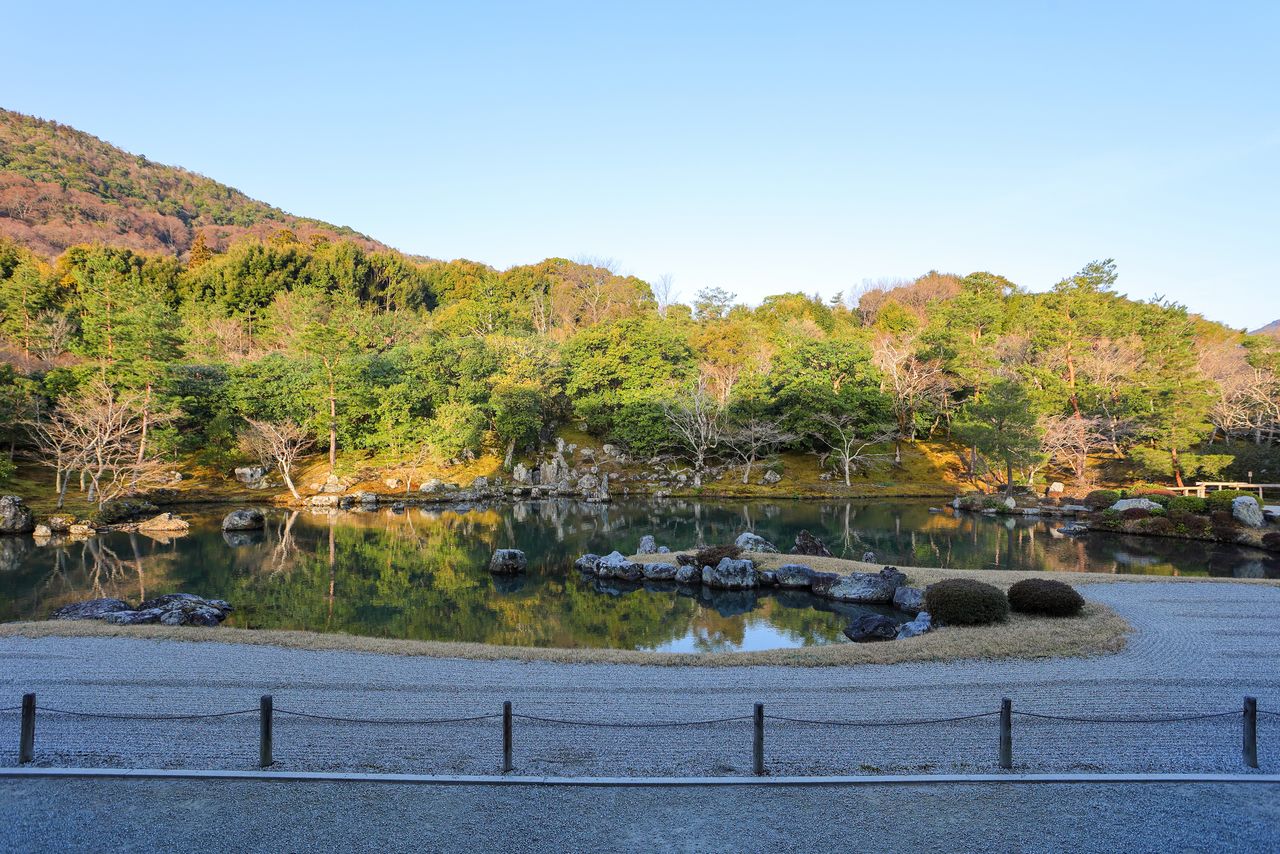
In the foreground, raked sand evokes a beautiful seashore. (© Edit Plus)
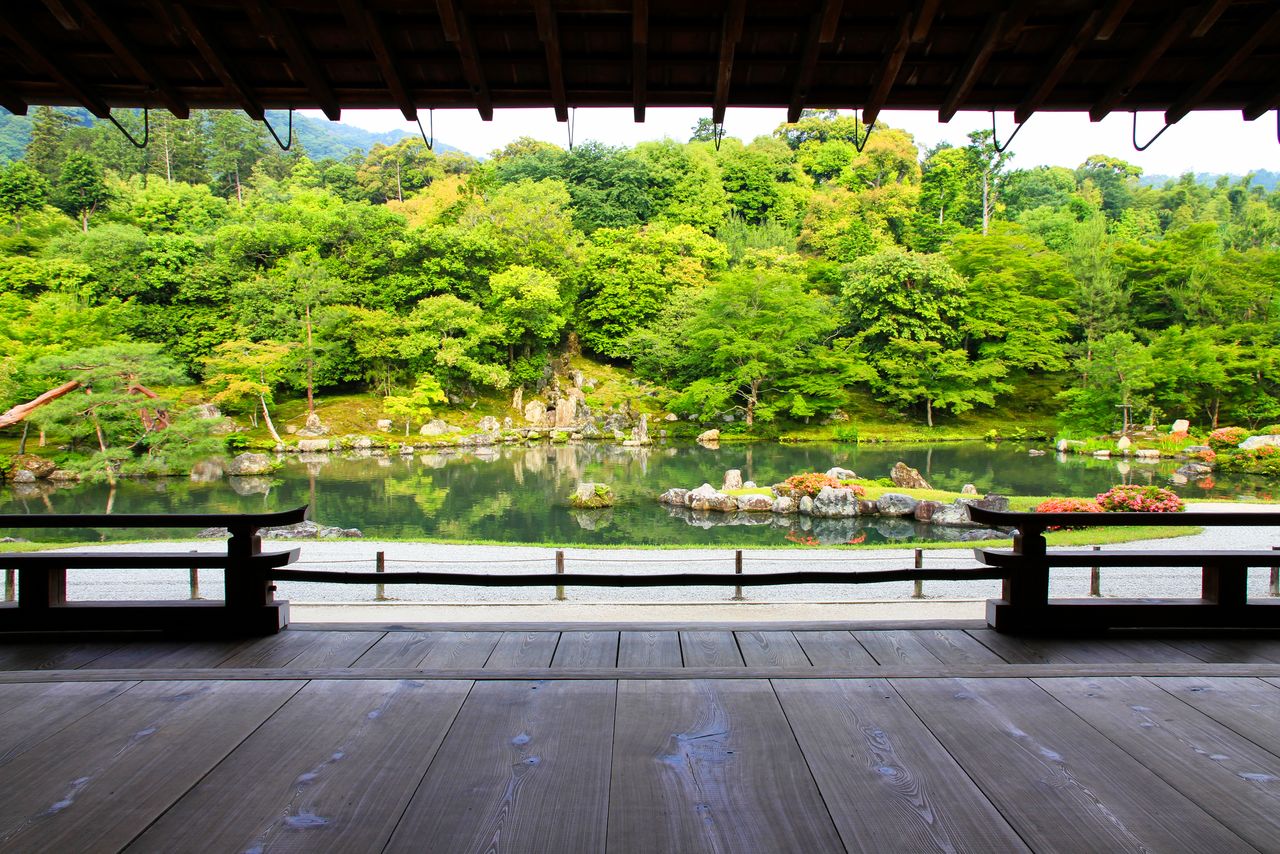
The perfectly framed view of the garden from the Daihōjō main hall. (Courtesy of Tenryūji)
Across the pond from the Daihōjō main hall is the Ryūmonbaku (Dragon Gate Falls), stones arranged to create a dry waterfall, a major feature of Zen gardens. The stones represent a Chinese legend telling of a carp that turned into a dragon after ascending the falls.
In Zen karesansui gardens, a stone standing in for the carp is usually placed under rocks arranged to represent a three-tiered waterfall. At Sōgenchi, though, the “carp” stone is set between the top and middle levels, to give a realistic impression of a carp climbing the falls to ascend to the heavens and turn into a dragon. Such dry rock falls are typical of Zen gardens employing only stone and sand, but water actually did flow through the rocks here in the past. The stone bridge directly under the falls incorporates the oldest existing natural stones in a Japanese garden.
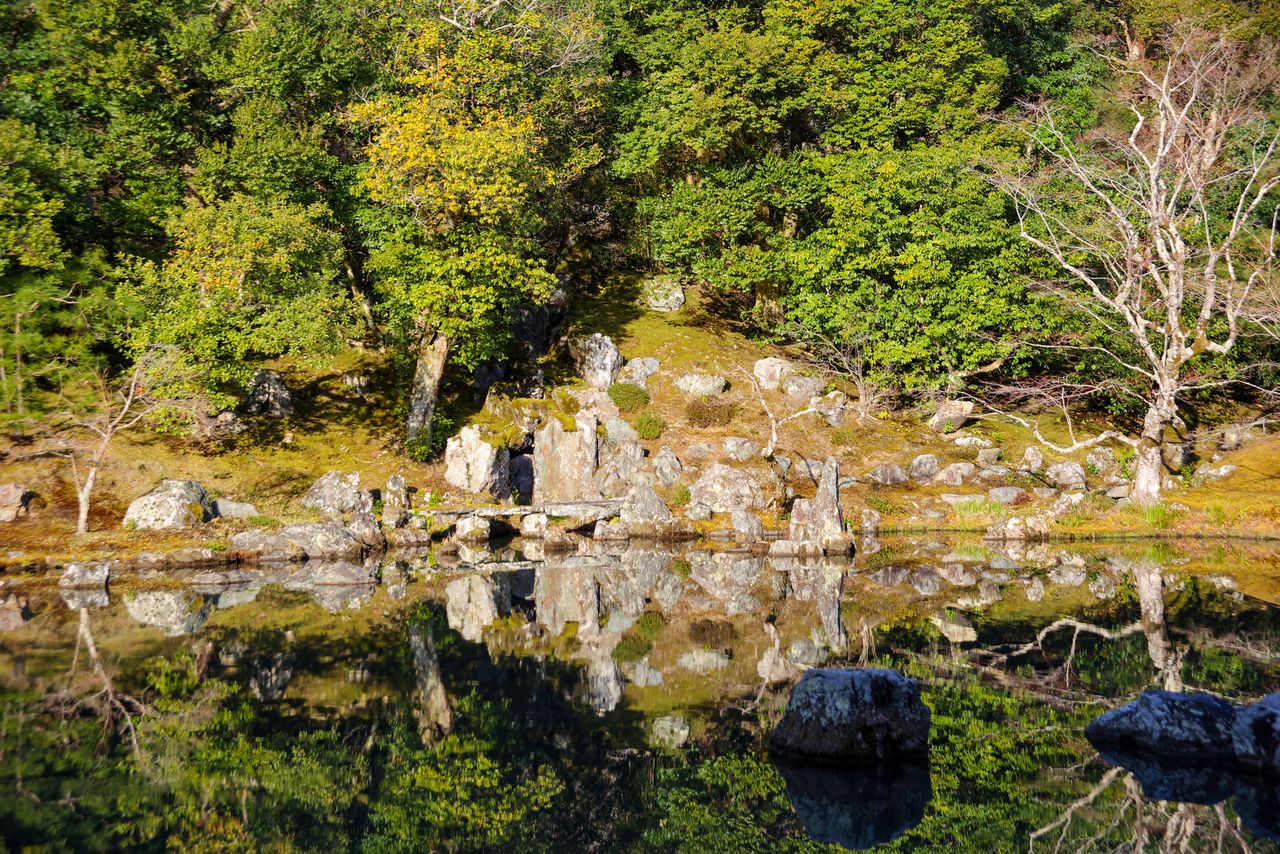
The Ryūmonbaku, in the center of the photo, is the country’s oldest stone grouping. To get a better view, using binoculars or a telephoto lens is recommended. (© Edit Plus)
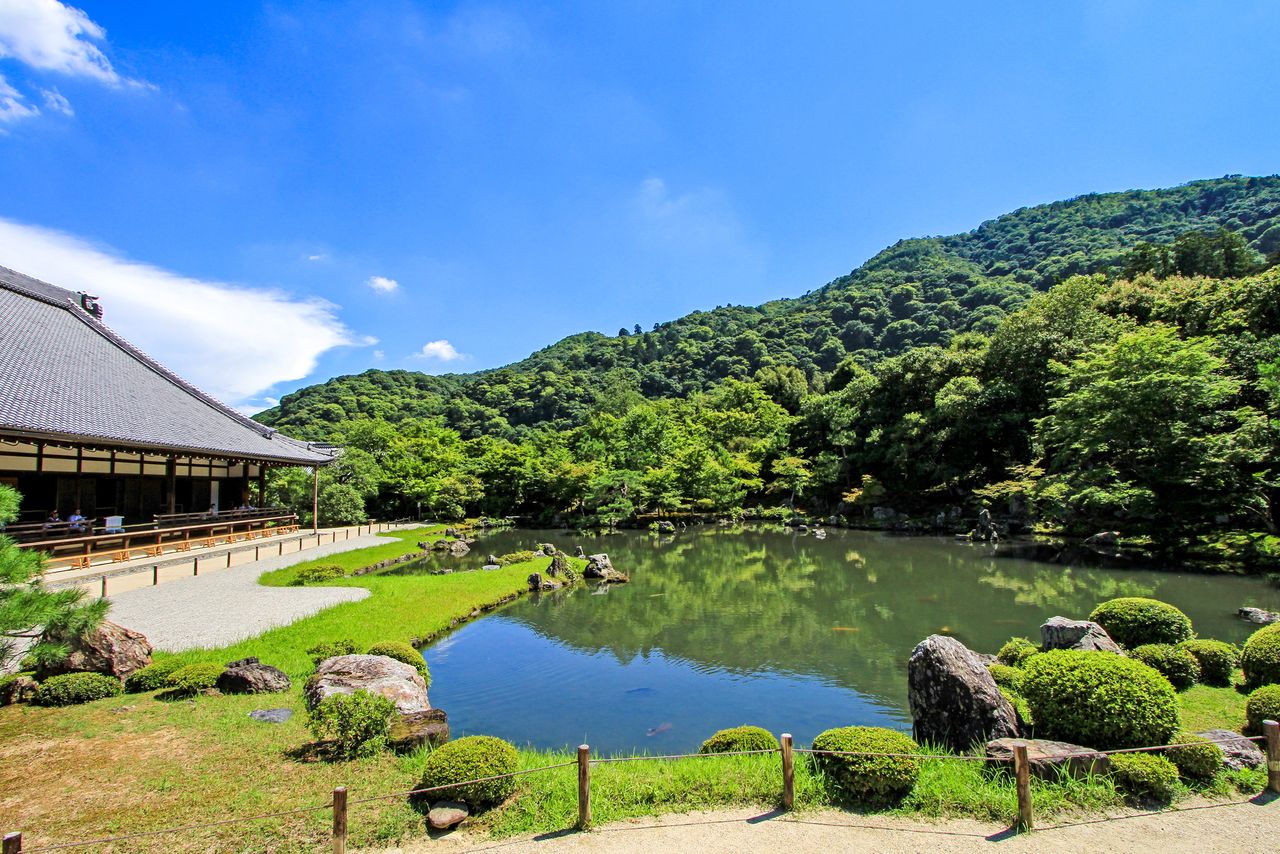
An early summer view from the Kohōjō study next to the main hall. The nearby mountains are reflected in the pond’s mirrorlike surface. (© Edit Plus)
Sōgenchi makes skillful use of the “borrowed scenery” technique, with the nearby promontories of Arashiyama, Kameyama, and Ogurayama giving the illusion that they are part of the garden. As these low mountains’ slopes turn brilliant green in early summer, yellow and red in autumn, and silvery white in winter, they provide an exquisite spectacle harmonizing perfectly with the garden.
Thanks to its unparalleled scenery, Sōgenchi was the first Zen garden in the country to be designated a place of special beauty. It is also deemed a place of historic interest, due to its historical and scholarly importance. Tenryūji is inscribed as a UNESCO World Heritage Site as part of the Historic Monuments of Ancient Kyoto.
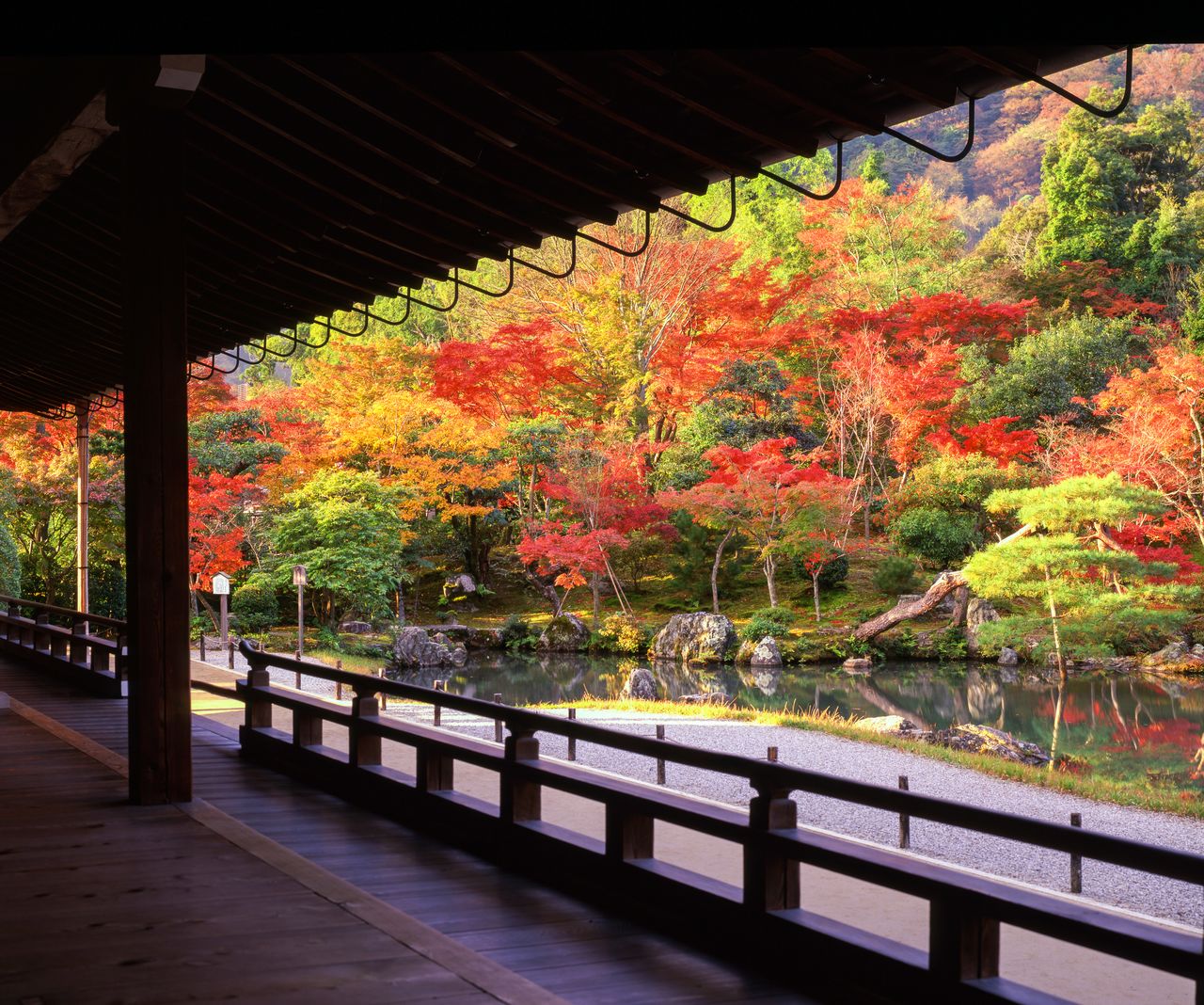
Autumn colors, viewed from the Daihōjō main hall. (© Edit Plus)
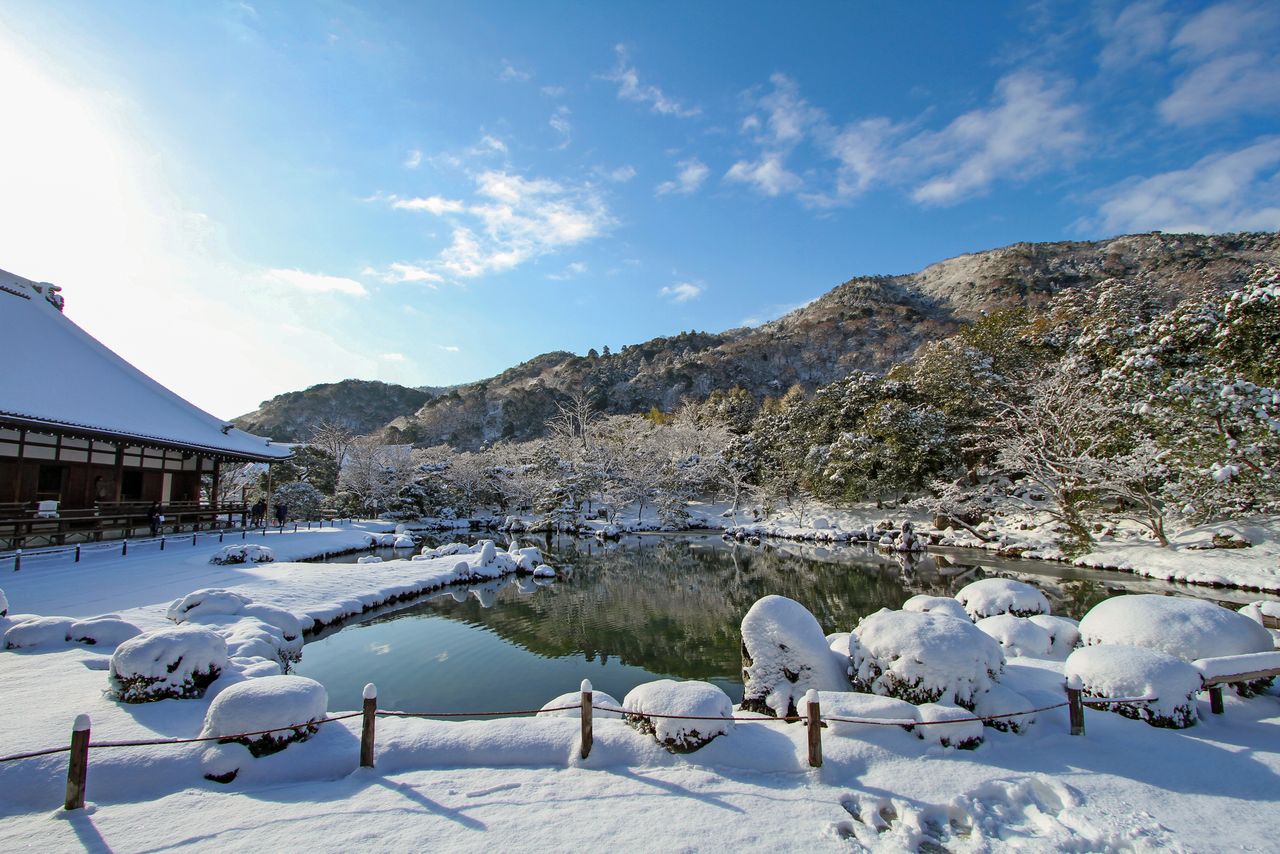
The temple’s garden in winter. This silvery landscape is a rare sight. (© Edit Plus)
Soothing Vistas
The best view of Sōgenchi, designed to be appreciated from indoors, is from the main hall. From the nextdoor study, the pond offers a beautiful reflection of the nearby mountains. Observing the garden in the tranquil atmosphere of the main hall brings both mental and physical refreshment.
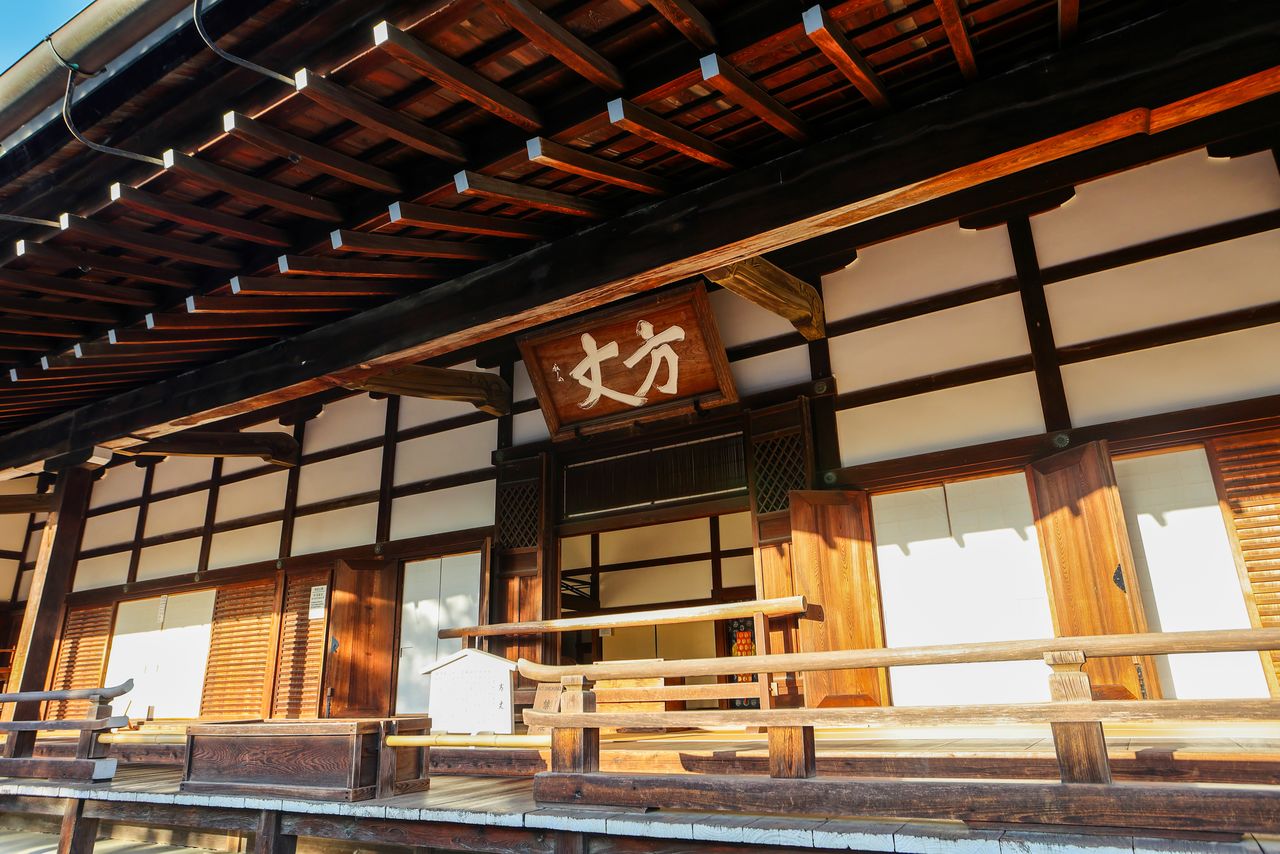
The Daihōjō main hall houses a seated figure of Shakanyorai, designated an important cultural property, as its principal image. (© Edit Plus)
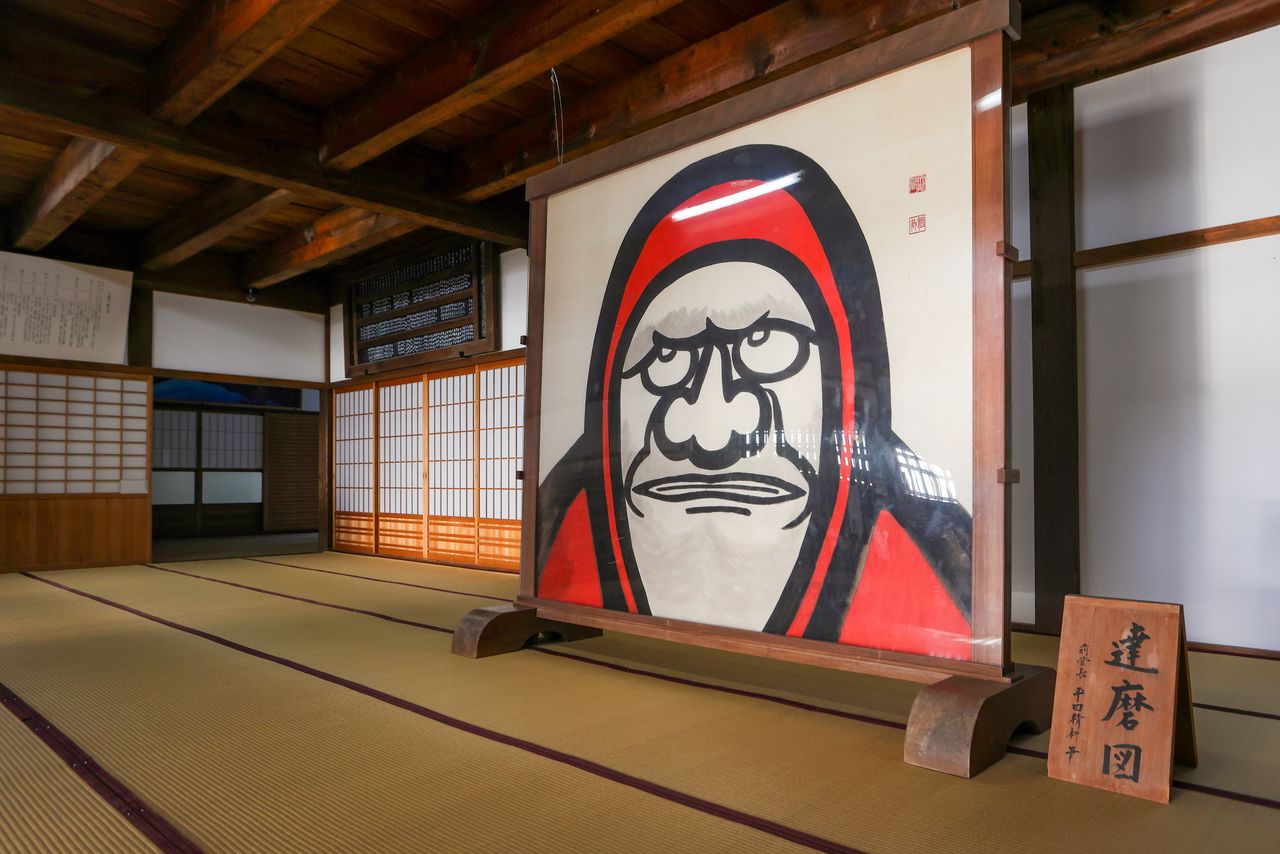
The Kuri living quarters, the first building on the route to the temple buildings open for viewing. A distinctive painting of Bodhidharma (known as Daruma in Japan), the monk who traveled from India to China and founded Zen, greets visitors. (© Edit Plus)
Along with a stroll in the garden, visitors can view the Hattō lecture hall with its gigantic “Cloud Dragon” rendering of a dragon on the ceiling, and the Tahōden, the mausoleum to Emperor Go-Daigo. Zen temples are dedicated to the practice of zazen meditation. The hushed atmosphere of the precincts has a calming effect conducive to this practice.
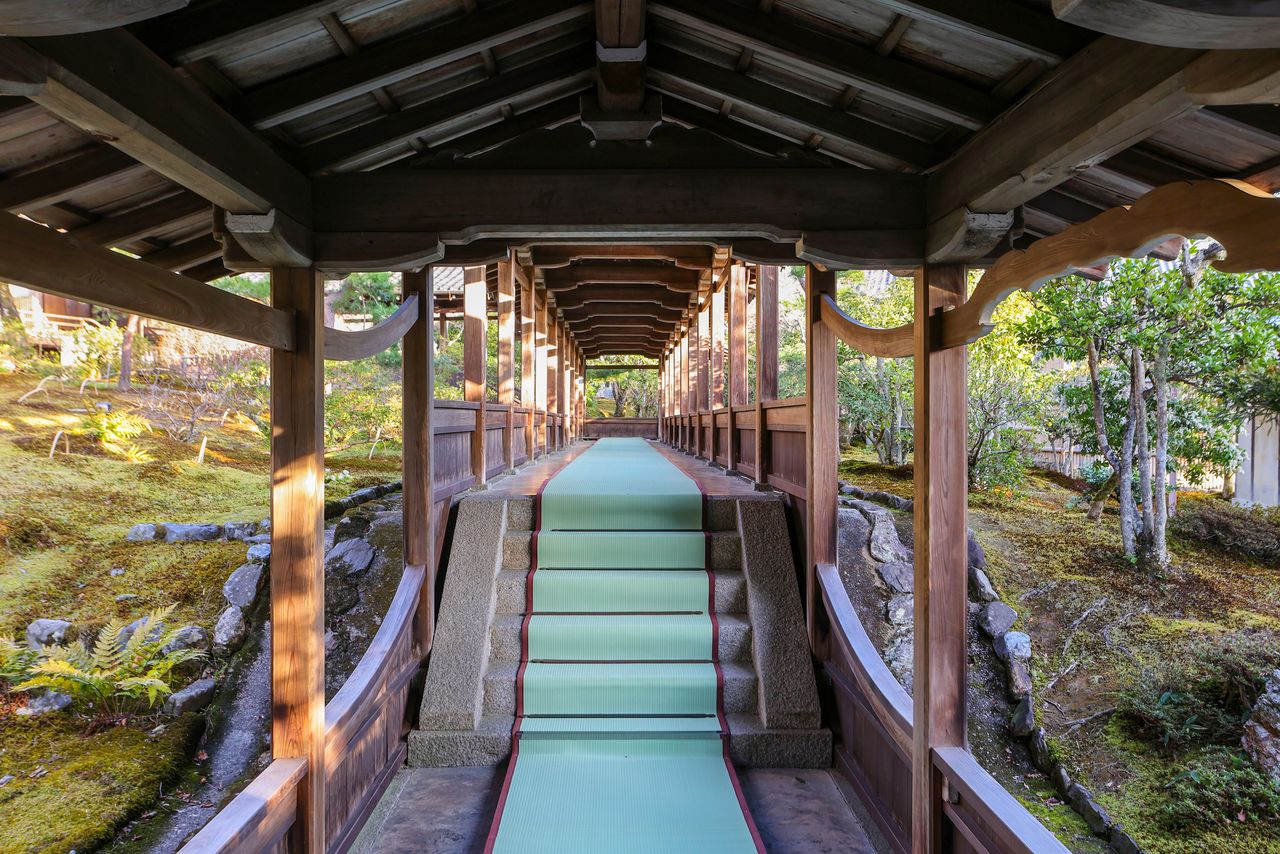
The corridor linking the study and the Tahōden hall provides scenic glimpses of the garden. This is the route to the three temple buildings that can be viewed for a separate fee. (© Edit Plus)
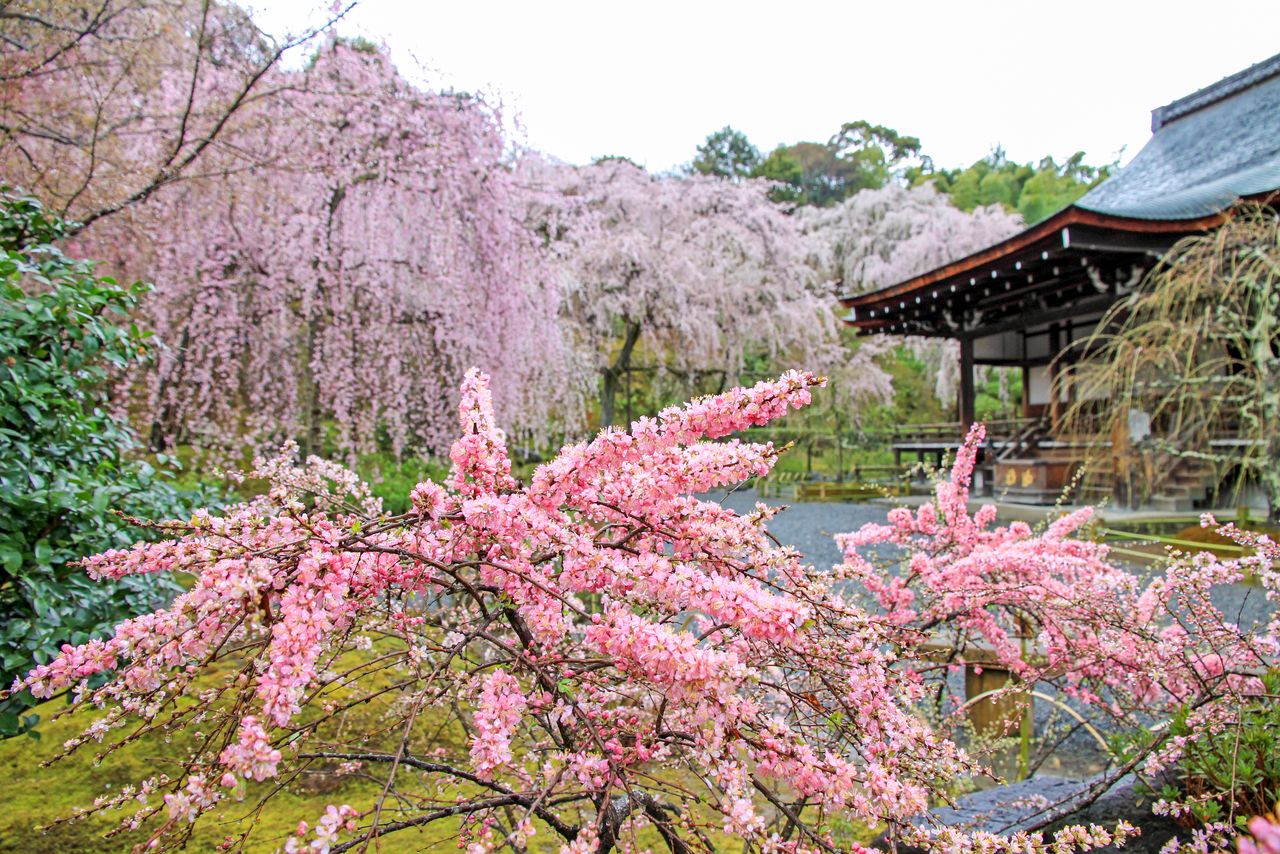
Cherry trees transplanted from Mount Yoshino in Nara Prefecture, where emperor Go-Daigo passed away, stand at the entrance to the Tahōden hall erected in his memory. (© Edit Plus)
The Hyakkaen garden, on the route leading to the temple’s north gate, is also a popular spot. This garden, which makes use of the naturally sloping terrain, offers a pleasant stroll among trees and flowers.
Camellias, hydrangeas, and flowering shrubs form a colorful backdrop. The plants in the garden are chosen to bloom at various times of year, delighting visitors year-round.
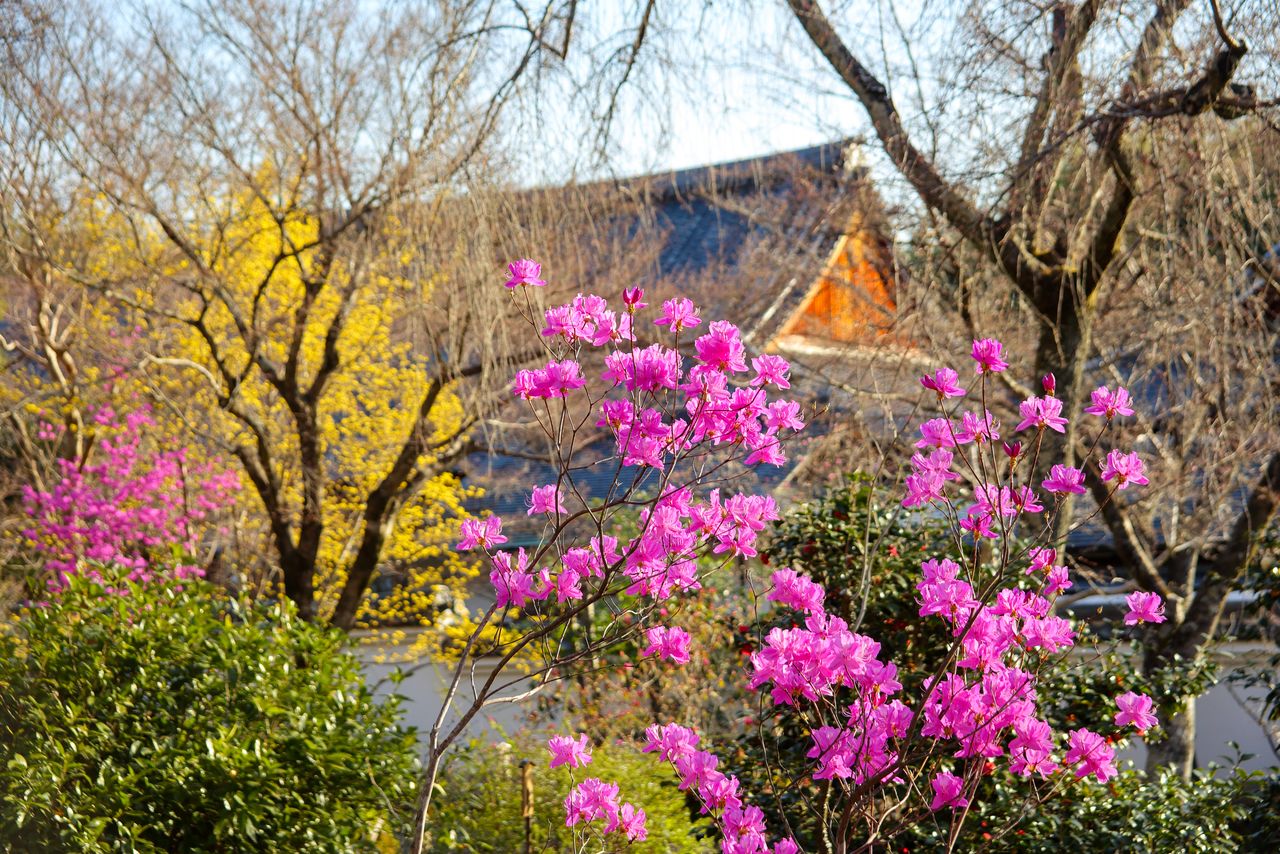
Brilliant yellow sanshūyu Japanese cornelian cherry, a flowering plant in the dogwood family, and vivid purple mitsuba tsutsuji rhododendron bloom around mid-March. (© Edit Plus)
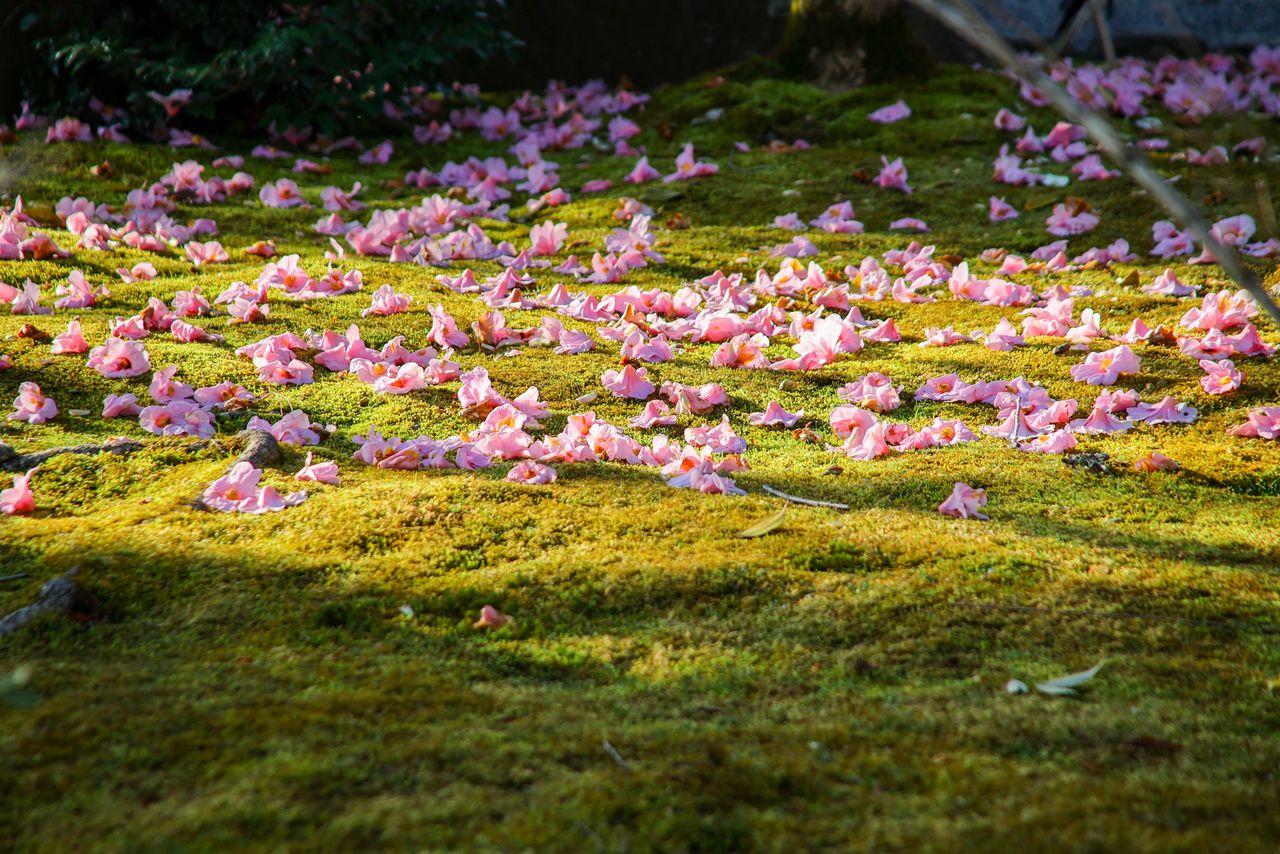
Fallen camellia blooms carpet the moss-covered ground. (© Edit Plus)
Outside the temple’s north gate is a path where bamboo stalks grow ramrod straight and seem to reach for the sky. Visitors can stroll in the dappled shade and feel a gentle breeze, a fitting finale to their visit to the temple.
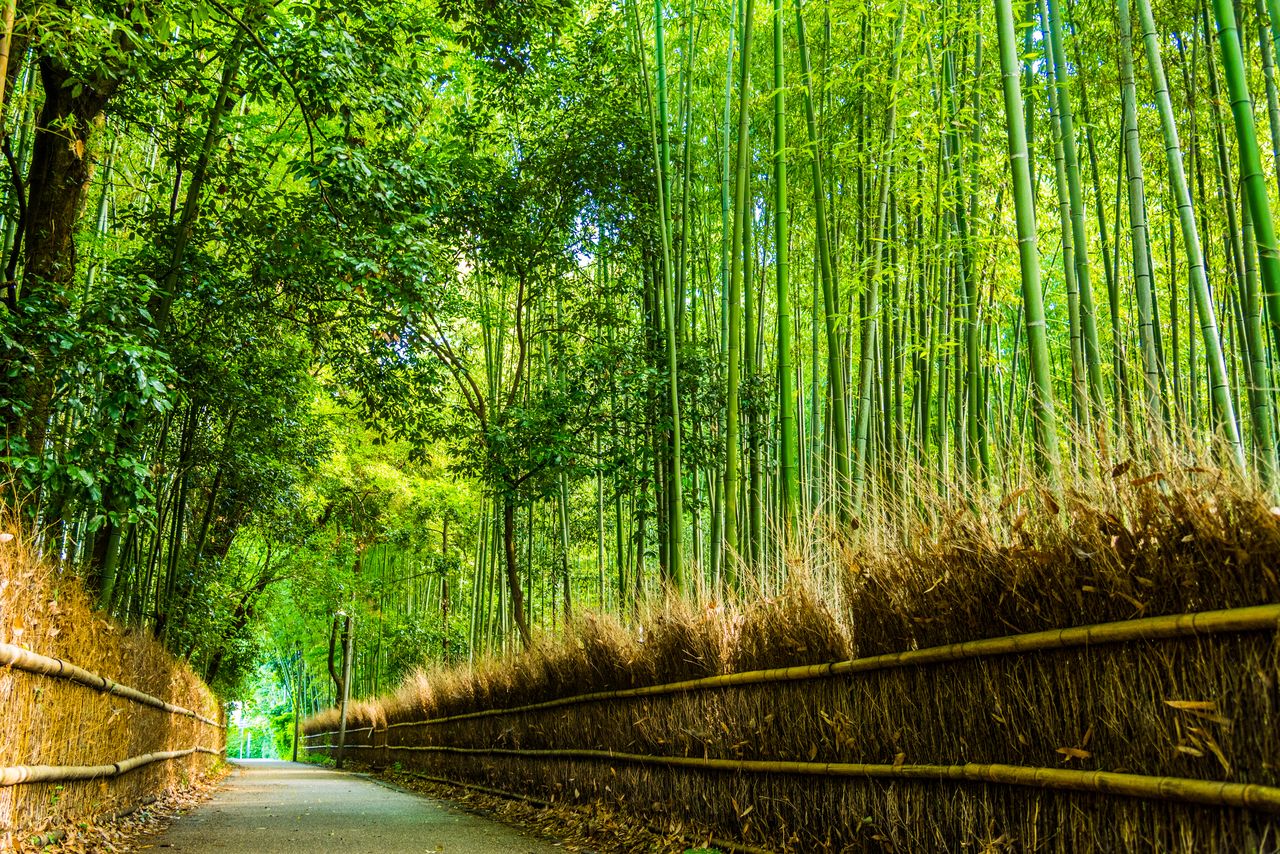
This corridor of bamboo growing 5 to 10 meters high is designated a special historic landscape by the city of Kyoto. (© Edit Plus)
Tenryūji
- Address: 68 Saga-Tenryūji Susukinobaba-chō, Ukyō-ku, Kyoto
- Hours: 8:30 am to 5:00 pm (last entry 4:50 pm); open year-round
- Entrance fees: Sōgenchi and Hyakkaen gardens, ¥500, plus ¥300 for entry to the Daihōjō main hall, the Kohōjō study, and the Tahōden Hall. Additional entry fee of ¥500 for the Hattō study hall (open on Saturdays, Sundays, public holidays, and some days in spring, summer, and autumn).
- Getting there: Adjacent to Arashiyama Station on the Keifuku Line, a 13-minute walk from JR Sagano Line Saga-Arashiyama Station, or a 15-minute walk from Arashiyama Station on the Hankyū Line.
(Originally published in Japanese. Reporting, text, and photos by Edit Plus. Banner photo: Arashiyama and the garden in early autumn, viewed from the Kohōjō study. Courtesy of Tenryūji.)